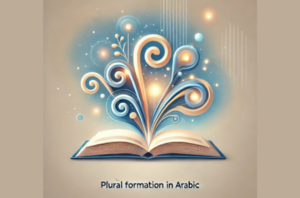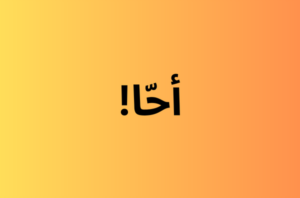Flags are more than just symbols—they tell the story of a nation’s history, culture, and dreams. In this post, we’ll explore the meanings of Arab countries’ flags.
Pan-Arabism It’s impossible to understand the flags of Arab countries without first understanding the Pan-Arab flag used during the Arab Revolt (1916-1918), which shaped Arab nationalism and led to the creation of new Arab states:
This flag (known as the “flag of the Arab Revolt” or the “Flag of Hejaz”) came to represent Pan-Arabism, a movement that aimed to get rid of colonialism and unite the Arabs based on shared language, culture, and history . It succeeded in former but failed in the latter. The colors represent Arab dynasties and important events in Islamic history.
Black: Represents the Abbasid caliphate and mourns those lost in the Battle of Karbala. It was also the flag of Prophet Muhammad and his companions, known as the Eagle Flag (راية العقاب)
.White: Represents the Umayyad caliphate and signifies purity and peace.Green: Represents the Rashidun and Fatimid caliphates and is associated with the Prophet’s family أهل البيت
. Also, green is considered the color of paradise.Red: Represents the Hashemite dynasty and bloodshed in the fight for freedom.
Arab countries’ flags mostly recycle these same colors but add extra layers of symbolism through unique symbols and meanings, honoring their connection to the Arab world while drawing distinct identities.
Important Symbols Many Arab flags include symbols. Here are a few common ones and what they mean:
Crescent moon and star: Adopted by the Ottoman Empire and passed on, the crescent moon and star are found on flags like Algeria, Tunisia, Libya, Mauritania, and Comoros.Sword: There’s two “Arab sword flags,” so to speak: Saudi Arabia and Oman. The sword on Saudi Arabia’s flag symbolizes justice and strength, while the sword and dagger on Oman’s flag represent authority, honor, and the nation’s defense.Eagle of Saladin: On Egypt’s flag, symbolizing power and resilience.Seven-pointed star: On Jordan’s flag, representing the seven verses of the Quran’s first surah.Takbir تكبير
and Shahada شهادة
: Found on the flags of Saudi Arabia and Iraq, they show the influence of Islam. “Takbir” means the act of saying الله أكبر
(“God is the Greatest”), while shahada (literally: testimony) means the act of saying لَا إِلٰهَ إِلّا لله محمَّد رسول لله
“There is no god but God. Muhammad is the messenger of God.” This is the central creed of Islam.
Arab countries’ flags Algeria Flag colors: Green, white, and redSymbols: Crescent and starHistory: Algeria adopted its flag in 1962 after gaining independence from France. The green represents Islam, the white symbolizes peace and purity, and the red represents bloodshed during the struggle for independence. The crescent and star symbols are common Islamic symbols.
The flag’s green and white colors were initially used by the national liberation movement and later incorporated into the national flag after independence. The red crescent and star symbols have been associated with Algeria since the early 19th century.
Bahrain Flag colors: Red and whiteSymbols: Serrated edgeHistory: The flag of Bahrain was adopted in 2002. The red color represents the Kharijite sect of Islam, while the white color represents peace. The five white points of the serrated edge stand for the Five Pillars of Islam.
Bahrain’s flag has evolved over time, with changes made to the number of points on the serrated edge to symbolize various aspects of the nation’s identity. The red and white colors have been used for centuries.
Comoros Flag colors: Green, yellow, white, red, and blueSymbols: Crescent and four starsHistory: The Comoros flag, adopted in 2002, has four stripes representing the its four main islands: yellow for Mohéli, white for Mayotte, red for Anjouan, and blue for Grande Comore. Green signifies Islam, the crescent represents the Islamic faith, and the four stars symbolize the unity of the islands.
Djibouti Flag colors: Light blue, green, white, and redSymbols: Red starHistory: Adopted in 1977, Djibouti’s flag uses blue to represent the sky and sea, green to represent the earth, white to represent peace, and red to represent unity and blood shed for independence.
Egypt Flag colors: Red, white, black, and goldSymbols: Eagle of Saladin with the words: جمهورية مصر العربيّة
“Arab Republic of Egypt” History: The flag of Egypt was adopted in 1984 and features the Arab Liberation colors. Red symbolizes the struggle against colonization, white represents peace, and black stands for oppression overcome. The Eagle of Saladin, a symbol of strength and power, is placed in the center.
The current flag of Egypt has its roots in the 1952 revolution that overthrew the monarchy. The Eagle of Saladin is a historical symbol that dates back to the 12th century, representing strength and national pride.
Iraq Flag colors: Red, white, black, and greenSymbols: Takbir (Allahu Akbar) اللهُ أَكْبَرْ
History: The current Iraqi flag was adopted in 2008. Red, white, and black are Pan-Arab colors, representing Arab unity and independence. The Takbir, written in Kufic script, symbolizes the Islamic faith.
Iraq’s flag has undergone several changes, reflecting the country’s tumultuous history. The addition of the Takbir in green script emphasizes the central role of Islam in Iraq’s national identity.
Jordan Flag colors: Black, white, green, and redSymbols: Seven-pointed starHistory: Adopted in 1928, the flag of Jordan is based on the flag of the Arab Revolt against the Ottoman Empire. Black, white, and green represent the Abbasid, Umayyad, and Fatimid caliphates, respectively. The red represents the ruling Hashemite dynasty and blood shed during the Arab Revolt. The seven-pointed star symbolizes the seven verses of the first surah of the Quran.
Kuwait Flag colors: Green, white, red, and blackHistory: Adopted in 1961, it features Pan-Arab colors, emphasizing the country’s connection to the broader Arab world. Green symbolizes fertility (prosperity), white represents peace, red stands for bravery, and black signifies the defeat of enemies.
Lebanon Flag colors: Red, white, and greenSymbols: Cedar treeHistory: Adopted in 1943, Lebanon’s flag features its iconic cedar tree, the national emblem of Lebanon, and a symbol of holiness, peace, and eternity. There are many references to “The Cedars of Lebanon” in the Bible, and they’ve been prized for thousands of years by ancient civilizations for building.
The red symbolizes the bloodshed and sacrifices made for the country’s independence, while the white represents peace, purity, and the snow-covered peaks of Lebanon’s mountains.
Libya Flag colors: Red, black, green, and whiteSymbols: Crescent and starHistory: Libya’s current flag, reinstated in 2011 after Gaddafi’s fall, is based on the original 1951 design. The black stands for past struggles, red for sacrifices made for freedom, green for the future and agriculture, and the crescent and star represent Islam.
Libya’s flag has undergone several changes, mirroring the country’s political shifts. The return to this historical flag reflects a desire to reconnect with Libya’s foundational values and hopes for a brighter future.
Mauritania Flag colors: Green, yellow, and redSymbols: Crescent and starHistory: The Mauritanian flag, adopted in 1959 and modified in 2017, features green and gold to represent Islam, with the red stripes added to symbolize the sacrifices made for independence.
Mauritania’s flag reflects its Islamic heritage and sacrifices during the struggle for independence. The green, yellow, and red colors symbolize the nation’s identity and its hopes for peace and prosperity.
Morocco Flag Colors: Red and greenSymbols: Pentagram (five-pointed star)History: The Moroccan flag, adopted in 1915, features a red field with a green pentagram. Red represents the royal family and bravery, while green represents Islam. The pentagram represents the Seal of Solomon, a symbol of Islamic lore, representing wisdom and protection.
Oman Flag colors: White, red, and greenSymbols: National emblem (sword and dagger)History: Adopted in 1970, the Omani flag features white for peace and prosperity, red for struggles against foreign invaders, and green for the Jebel Akhdar Mountains (The Green Mountain) and fertility. The national emblem, a sword and dagger خنجر
, symbolizes the Sultanate’s strength and heritage.
Palestine Flag colors: Black, white, green, and redHistory: The Palestinian flag was adopted in 1964 by the Palestine Liberation Organization. It features the Pan-Arab colors, which reflect strong connections to other Arab nations and the struggle for independence. Black represents the Abbasid dynasty, white the Umayyad dynasty, green the Fatimid dynasty, and red the Hashemite dynasty.
Qatar Flag colors: Maroon and whiteSymbols: Nine-pointed serrated edgeHistory: The flag of Qatar, adopted in 1971, features a white serrated band of nine points, representing Qatar as the ninth member of the reconciled Emirates of the Arabian Gulf at the conclusion of the Qatari-British treaty in 1916. The maroon symbolizes Qatar’s rich history and the sacrifices made during various wars, while the white stands for peace.
Saudi Arabia Flag colors: Green and whiteSymbols: Shahada الشهادة
and sword.History: On the flag of Saudi Arabia, adopted in 1973, the green field represents Islam. The Shahada, inscribed in white, affirms the Muslim faith; it’s the central creed of Islam: لَا إِلٰهَ إِلّا لله محمَّد رسول لله
“There is no god but Allah. Muhammad is the messenger of Allah”. The white sword represents the House of Saud (Saudi Arabia’s ruling royal) and justice.
Somalia Flag colors: Blue and whiteSymbols: White starHistory: Adopted in 1954, the Somali flag’s five-pointed star symbolizes the unity of the five regions inhabited by Somalis: Djibouti, Somaliland, the Ogaden region, the North Eastern Province, and Somalia. The blue represents the sky and the Indian Ocean surrounding the country, while the white symbolizes peace and unity among the Somali people.
North Sudan Flag colors: Red, white, black, greenHistory: The flag of Sudan, adopted in 1970, incorporates Pan-Arab colors. Red represents the struggle for independence, white represents for peace and optimism, black represents Sudan itself (named “بِلَاد السُّودَانْ”
meaning “land of the blacks”), and green represents agriculture and prosperity.
Syria Flag colors: Red, white, black, and greenSymbols: Two starsHistory: The current flag of Syria, adopted in 1980, also uses Pan-Arab colors to represent the unity of Arab nations. The two green stars symbolize the union between Egypt and Syria, which formed the short-lived United Arab Republic from 1958 to 1961.
Tunisia Flag colors: Red and whiteSymbols: Crescent and starHistory: Adopted in 1831, the flag of Tunisia is the oldest Arab flag. It features a red field representing bloodshed during resistance against the Turkish occupation. The white circle represents peace, and the red crescent and star represent Islam and unity.
United Arab Emirates Flag colors: Green, white, black, and redHistory: Adopted in 1971, the Emirati flag features Pan-Arab colors representing Arab unity. Green represents fertility (prosperity), white represents neutrality, black represents oil wealth, and red represents bravery.
Yemen Flag colors: Red, white, and blackHistory: The Yemeni flag, adopted in 1990, features the usual Pan-Arab colors. But red symbolizes the blood shed for independence, white stands for a bright future, and black represents the dark past that the country has overcome, according to the official description.
How to say “flag” in Arabic? Since you’re curious about Arab flags, you might also want to know how to say “flag” in Arabic. Check out the chart below to see how “flag” is expressed in Modern Standard Arabic and major Arabic dialects , including Levantine , Egyptian , Gulf , and Darija .
MSA Levantine Egyptian Gulf Darija عَلَم
عَلَم
عَلَم
عَلَم
عْلَام
رَاية
راية
راية
راية
راية
Oh, and by the way…
If learning Arabic at your own pace, with fun, real-world videos sounds like your style, then Playaling could be exactly what you’re looking for!
With Playaling, you’ll dive into any major Arabic dialect or MSA. Our diverse range of videos has it all—from everyday conversations and cultural moments to music videos, TV and movie clips, influencer content, news broadcasts, and inspiring talks.
Our interactive captions let you tap any word for instant translations, context, and audio. So, real Arabic content becomes accessible with just a click. Miss something? No problem—rewind and listen as often as you need, or hover over subtitles for quick definitions.
Spot a word you want to learn? Save it to your personalized word set, or dive into curated sets for focused practice and easy review.
Interactive exercises let you dive in and practice what you’ve learned.
Need to look something up? The Audio Dictionary has you covered with clear human pronunciations and real world examples.
It’s a learning experience that keeps you engaged, bringing authentic, real-world Arabic closer to you every step of the way.
Give it a try!









